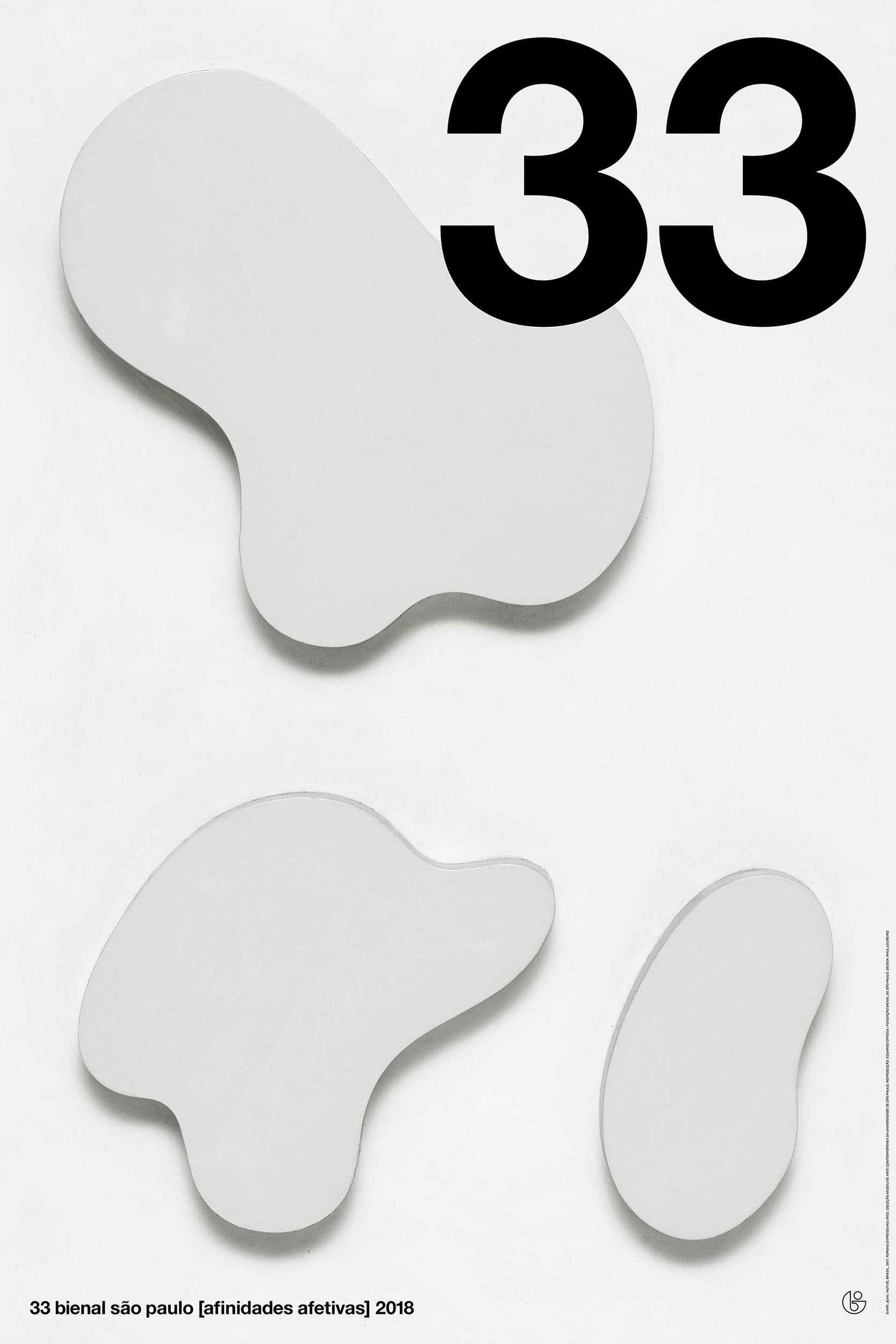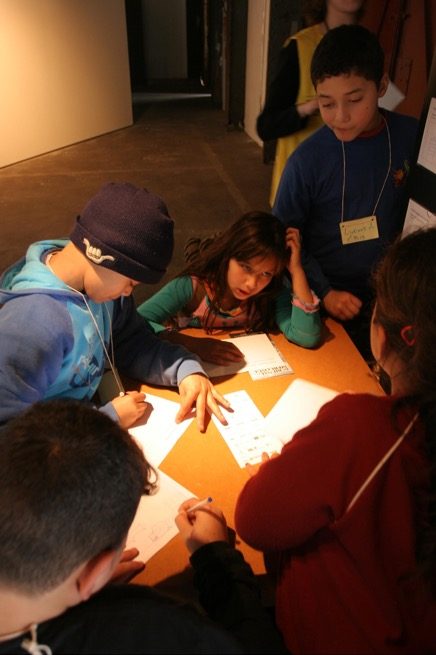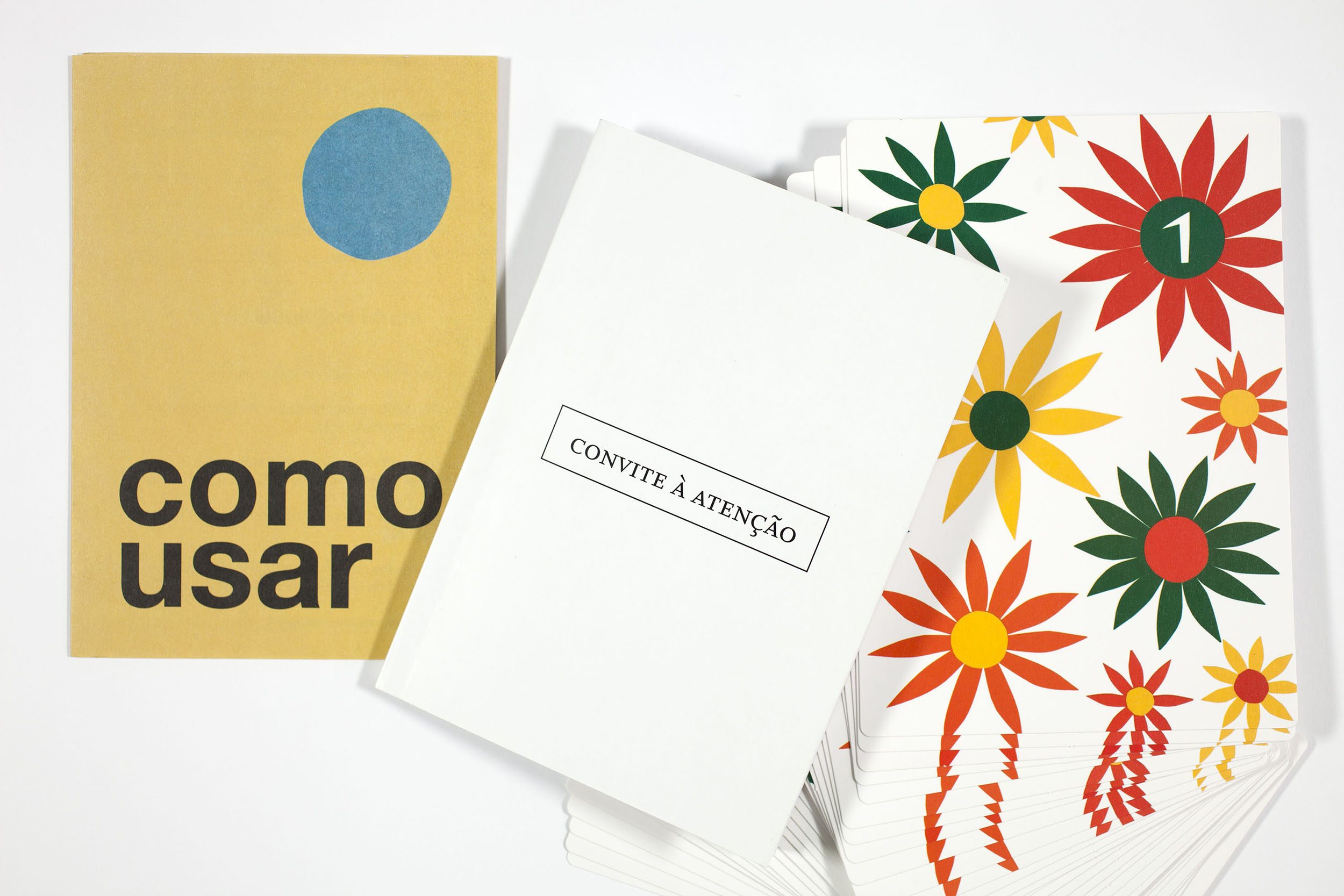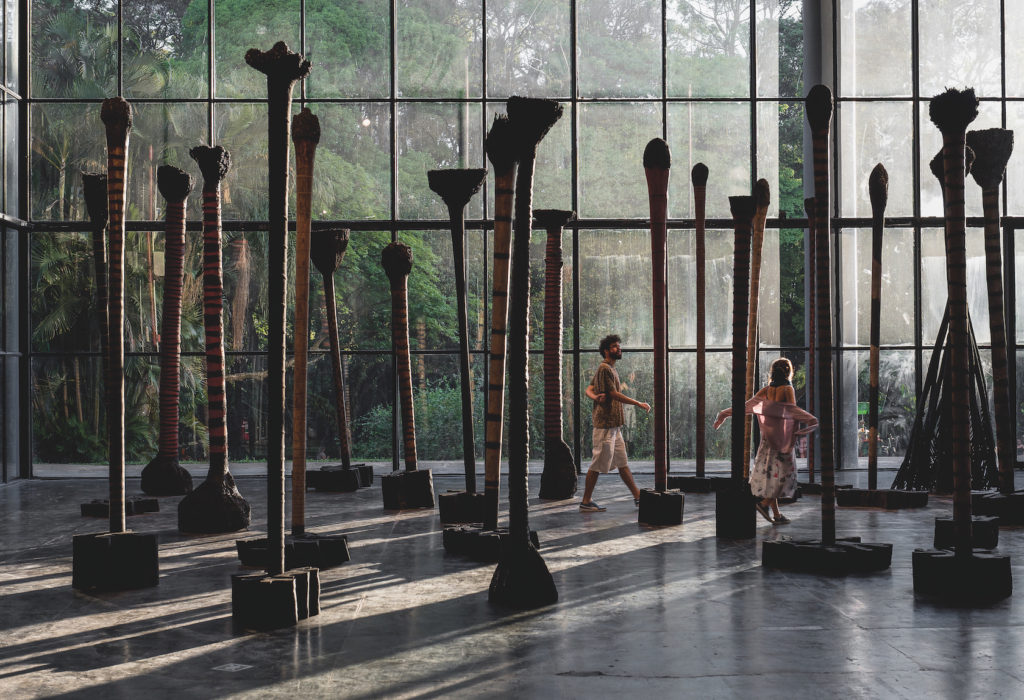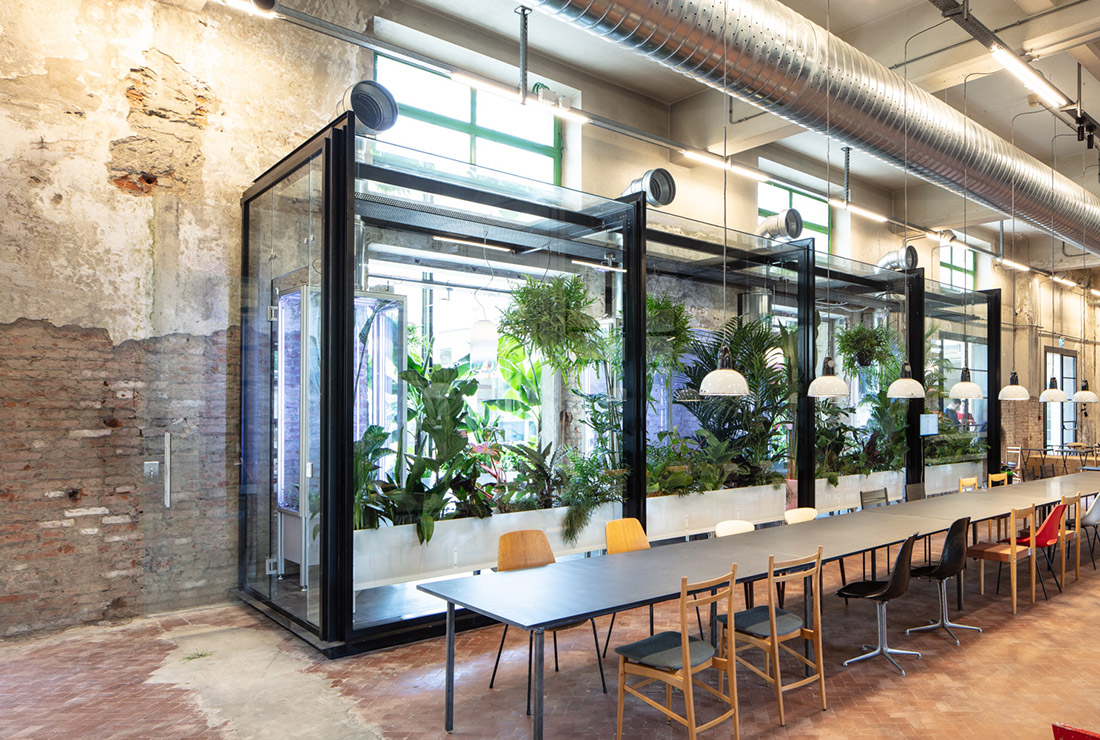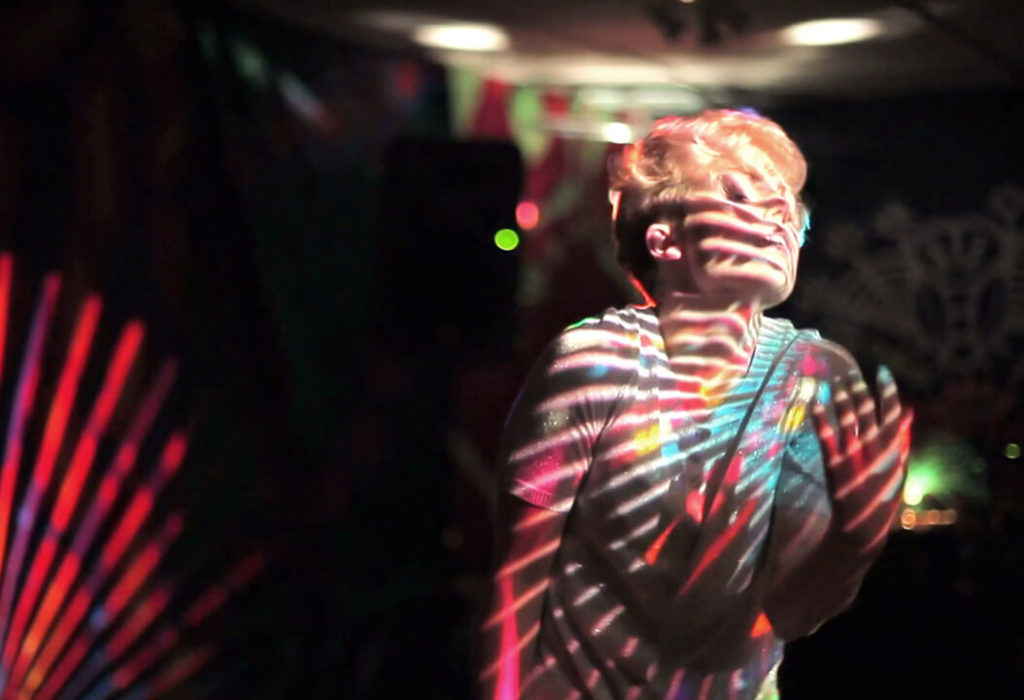Gabriel Pérez-Barreiro
Affective Affinities: Ideas Around the 33rd Bienal de São Paulo
- 17.12.2018
Poster of the 33rd Bienal de São Paulo, 2018.
In 2018 it’s hard to think of the challenges and possibilities of biennials without feeling something akin to the tired blurriness of a hangover. Many pages have been written about the crisis of the biennial, the proliferation of the model, and the impossibility for any single human being to keep up with an increasingly crowded agenda of ‘must-see’ events around the globe. At the same time, ‘biennialism’ seems to be a very real thing, an established model of thematic group exhibitions, often with a broad sociopolitical-ecological agenda, that gets redeployed from venue to venue.
Poster of the 33rd Bienal de São Paulo, 2018.

View of the posters of the previous 32 Bienal de São Paulo. Photo: Gabriel Pérez-Barreiro
It was not always so. One of the pleasures of working at the Fundação Bienal de São Paulo is that the corridor on the way to my office displays posters of the 32 previous editions, stretching back to 1951. São Paulo started by emulating Venice, with the ambitious agenda of placing Brazil on the international art map, which it achieved almost immediately. Over these 67 years, it has been organised in many different ways – national representations, juries, applications, commissions, curators – reinventing or adjusting its operating system along the way.
The 24th edition in 1998, curated by Paulo Herkenhoff, marked a watershed in this history, establishing the ambitious thematic exhibition as a model (while maintaining national representation, which was only eliminated in 2006). This new direction was fully in line with the global shift towards the discursive and curatorial biennial, in which a thematic axis would provide the coherence and self-defined ideological position that was absent from the former atomised national-representation model. Subsequent editions of the Bienal de São Paulo all adopted this model, as did most other biennials in the world, inaugurating the great Age of Biennials, which also saw many cities starting a global, thematic biennial.
Since 1998, there has also been a huge shift in professional training. Early biennial curators were former artists, art historians or critics who had grown up with art and artists, and traced their own, often rambling, paths. By contrast, at the turn of the 21st century it was possible to study curating and to become a curator straight out of university. The curriculum at many curatorial programmes has been developed around the study of the work of other curators. As a result, the curatorial system has become simultaneously larger in scale and more limited in artistic references. In fact, the thematic group exhibition became the dominant paradigm not only for biennials, but for contemporary art in general. In parallel, artists were increasingly taught to professionalise, which included writing statements about their work, in the hopes of being visible in this thematic marketplace of ideas. Hence the proliferation of statements starting with: “My work is about/investigates…”
Could we possibly be coming to the end of this era? Are there literally too many biennials and perennials for anyone to care about any more? Do themes still resonate? Are there other ways to organise these events without repeating and reinforcing the same model?
To answer these questions, it is helpful to look beyond the curatorial/thematic framework to see what other terms might serve to organise a biennial. Besides the economic and political benefits of biennials, we could consider their other impacts on various audiences and on artists themselves. For example, their potential for arts education and the opportunities they provide for artists can be huge. Biennials often serve vaster and more diverse audiences than museums and galleries, largely because of their event-based approach, dense calendar and location in a city.
The latest (32nd) edition of the Bienal de São Paulo attracted 900,000 visitors, a daily attendance that competes with New York’s Museum of Modern Art (MoMA), in a city that has little tourism.1 The Mercosur Biennial in Porto Alegre attracts around 500,000 visitors in a city of 1.4 million. Both of these biennials have rigorous education programmes, with significant resources dedicated to mediation and communication for a non-specialised audience often coming into contact with contemporary art for the first time. The content of the education programmes themselves is often innovative, informed by experimental pedagogy, and is led by a dedicated member of the curatorial team working with the permanent biennial staff.
The Brazilian experience suggests that biennials can be assessed in terms of both their curatorial discursivity and their social impact. The participating artists themselves constitute another vital audience. The biennial model can provide unique opportunities for artists to produce new work, or present their work in new ways, to audiences beyond the gallery or museum.
I would like to think that the Brazilian experience can help us find ways to future-proof the biennial model by considering audiences and artists as key partners in the institutional project, and by extending the frame of reference beyond the narrowly curatorial and discursive. If we are indeed coming to the twilight of the curator/auteur/thematic model, it will be increasingly important to consider who else the biennial benefits in order to guarantee it a vital and dynamic place in our society. This will require a rethinking and restructuring of the institutions that organise biennials to include systematic reflection on their audiences (beyond statistics) and on the contribution they can make to the artistic community. If we can develop an approach that balances innovation and experimentation with an institutional sense of responsibility to artists and to the community, the biennial model may yet prove to have a long life.
View of the posters of the previous 32 Bienal de São Paulo. Photo: Gabriel Pérez-Barreiro
NOTES
1 For a discussion of the 32nd Bienal de São Paulo, see Jochen Volz’s text on pages 112-119.
ABOUT THE AUTHOR
Gabriel Pérez-Barreiro is Curator of the 33rd Bienal de São Paulo, and Director and Chief Curator of the Colección Patricia Phelps de Cisneros in New York and Caracas. In 2007 he was Chief Curator of the 6th Mercosur Bienal in Porto Alegre, Brazil. Former roles include Curator of Latin American Art at the Blanton Museum of Art, University of Texas at Austin, and Director of Visual Arts at The Americas Society, New York.
Author’s name, “Title,” in PASS: Journal of the International Biennial Association (Month Year), URL.

